Board Games vs. Video Games
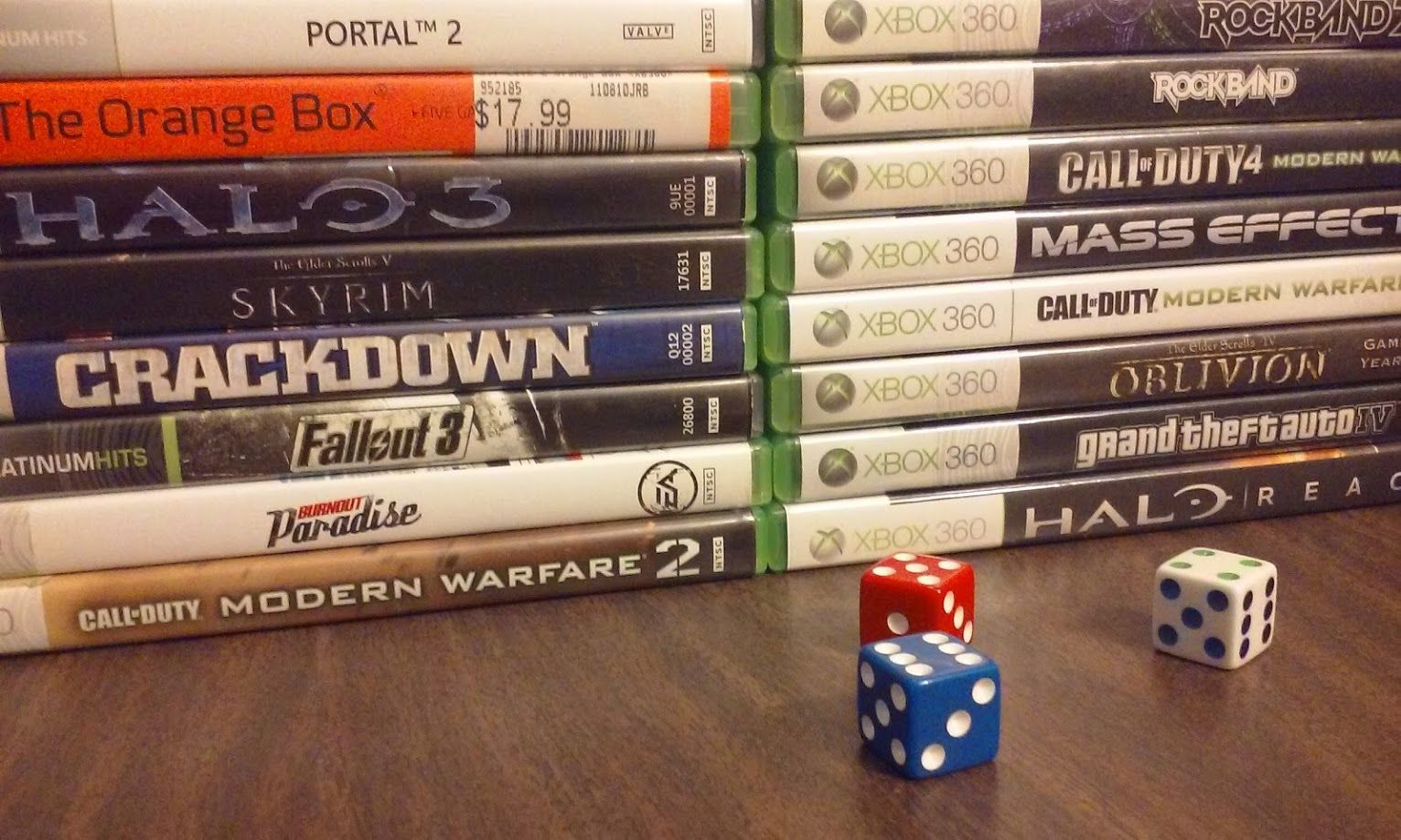
Identifying the strengths and weaknesses of each medium.
1/12/2017
Every great city needs a few assassins and thieves.
Posted on 1/21/2017 by Tim Rice
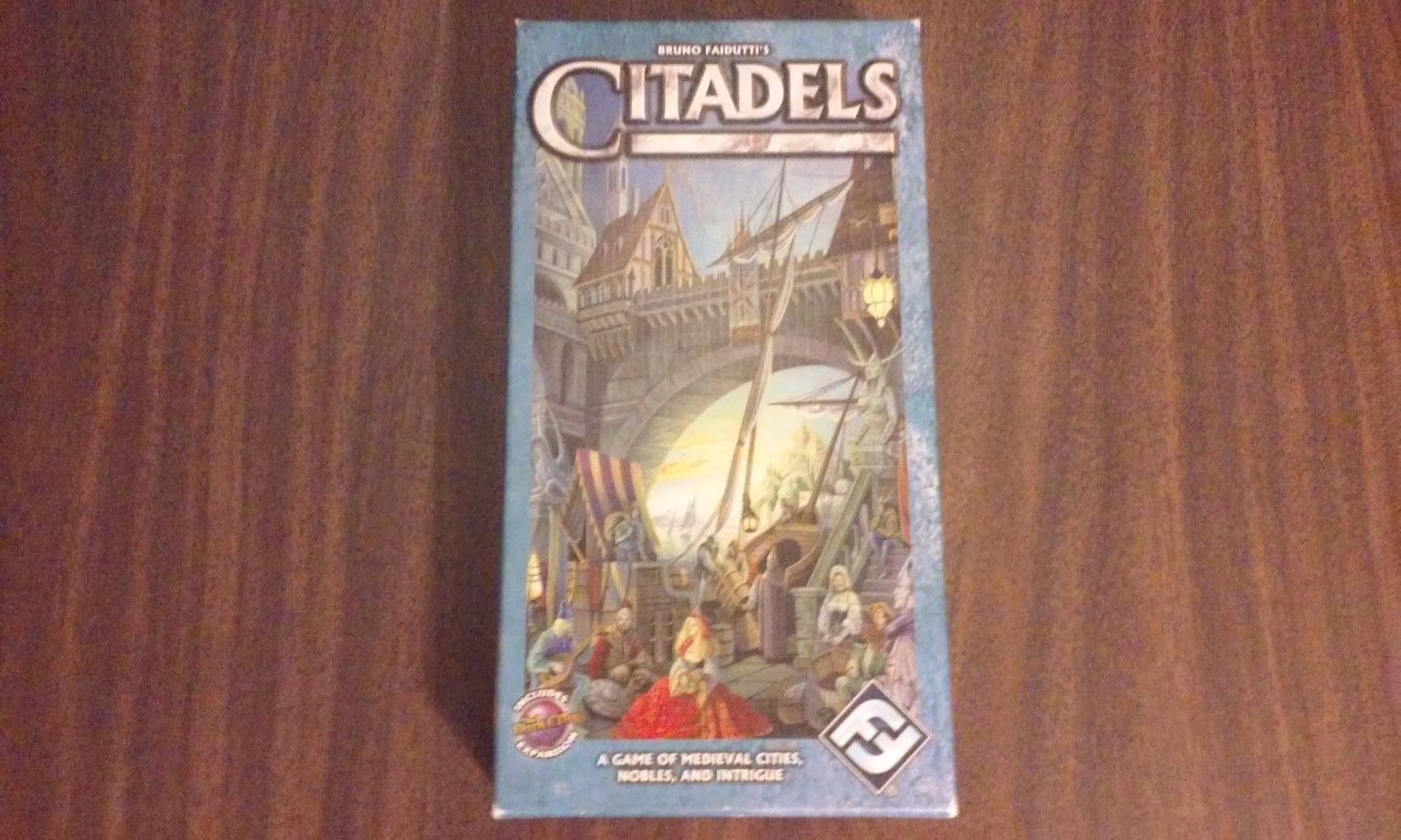
Citadels is a card game where players compete to build the most impressive city. To do this, players will need to influence certain powerful people if their city is to have any chance of success. This is one of the first games I picked up when I started getting into hobby gaming because I wanted to build a collection that had a wide variety of mechanics, and Citadels is one of the quintessential role selection games. Not only that, but it’s cheap!
I should note that the version I’m reviewing is a few years old. There’s a newer 2016 edition available that includes new artwork as well as some brand new content. From what I’ve seen, the presentation in the new version is heads and shoulders above my version, so if you’re planning on buying this game, I would suggest getting the 2016 edition.
Citadels comes with a deck of district cards, eight character cards, some gold tokens, and a wooden crown marker. To start a game, both decks are shuffled, each player is dealt four district cards, each player takes two gold, and the oldest player starts with the crown.
After that, a series of rounds takes place. To start a round, players remove a certain number of character cards from the deck (this changes depending on the number of players). Then, the player that holds the crown secretly chooses one of the remaining characters from the deck and passes the rest to the next player. This continues until every player has a character. The final player will be left with one extra character which is secretly discarded.
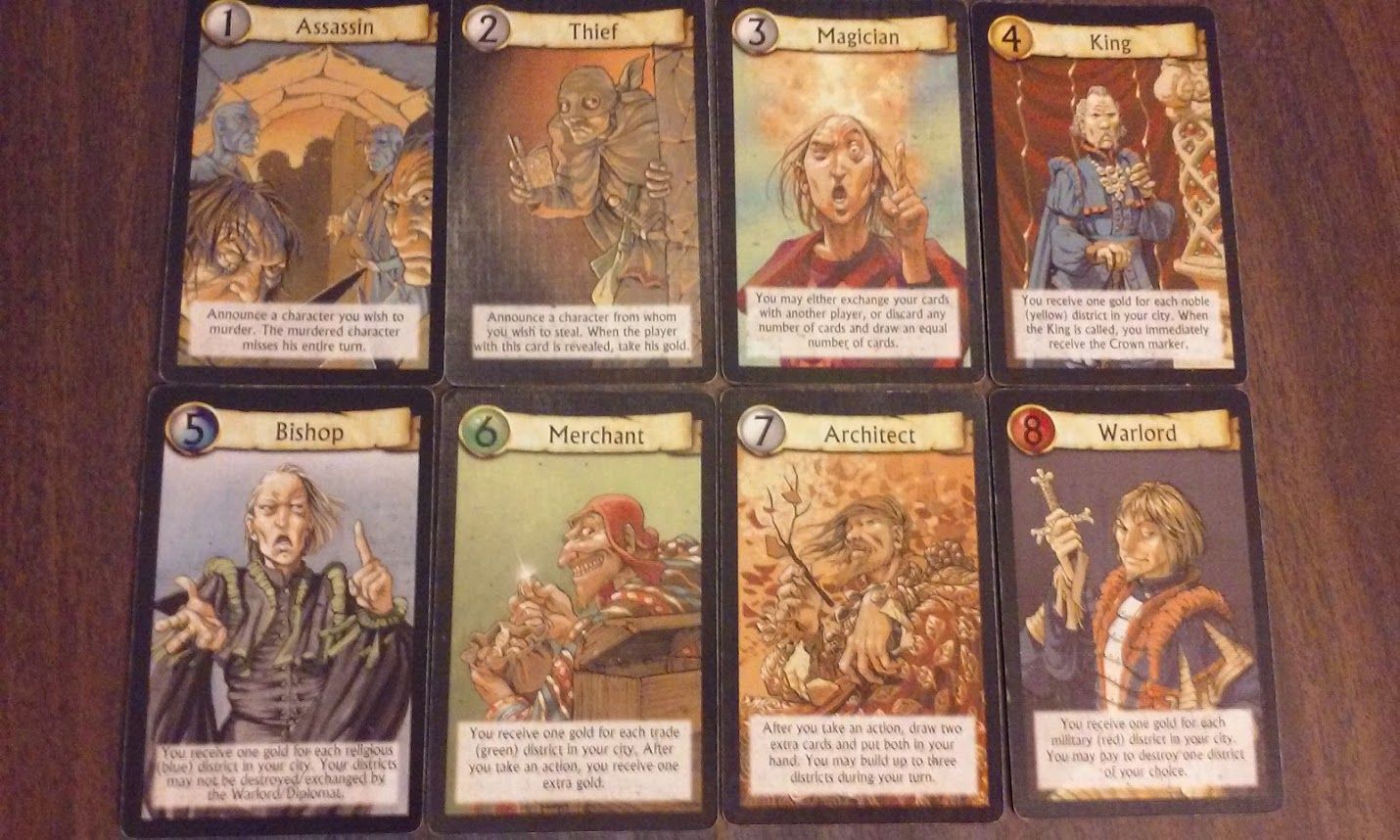
Each character has an important special ability, and players will often be trying to figure out who has which character because that information is relevant to a few of the powers. Players are never able to determine with 100% certainty that any player has a certain character, but they can make educated guesses based on the information they got by looking at the remaining character cards. These are the basic characters:
Once every player has a character, the next step is the player turns. The player that currently has the crown marker will call out characters in number order to take their turn (so the Assassin always goes first, and the Warlord always goes last). When a player’s character is called, they must flip their card over and immediately take their turn.
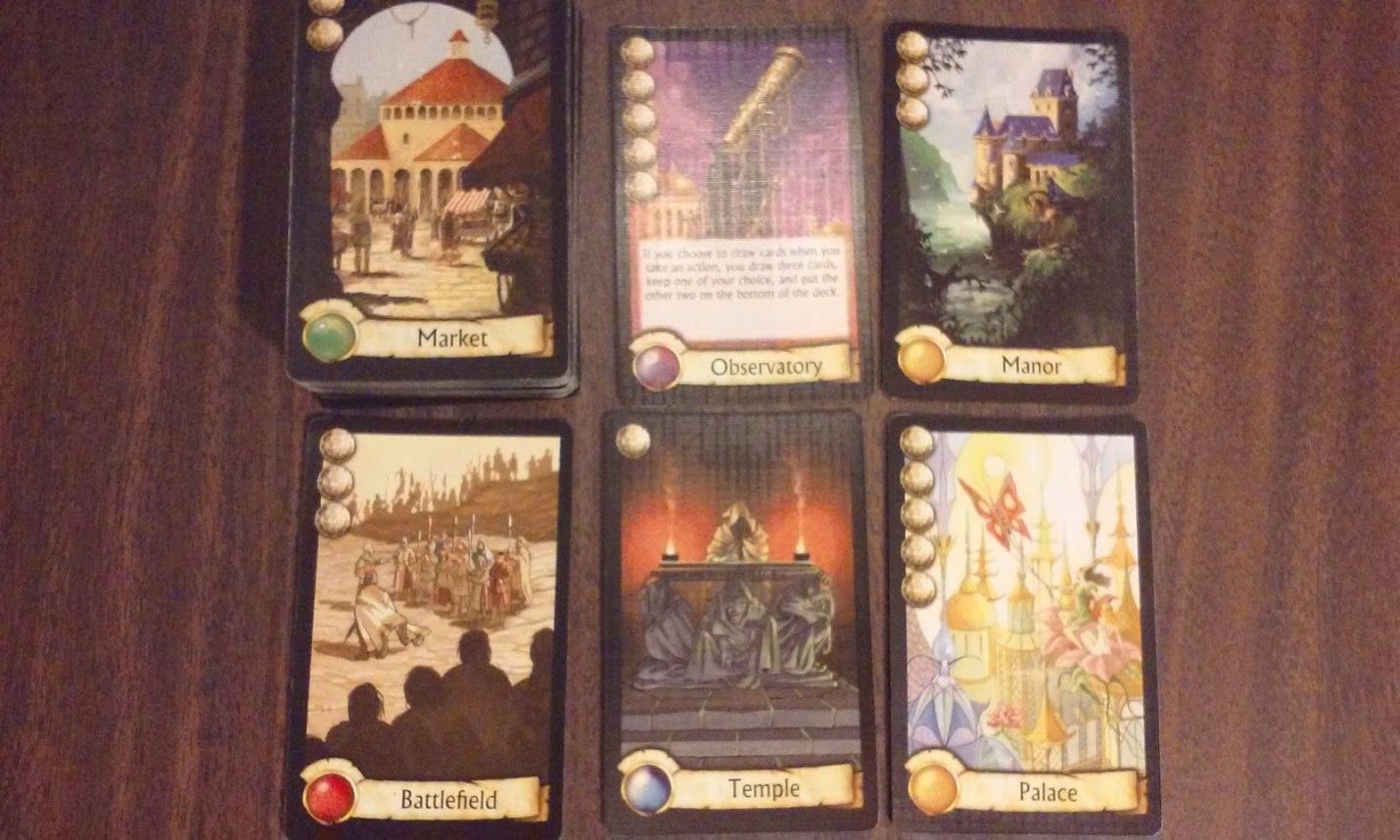
A turn consists of an action, a building phase, and the character power (which can be used anytime during the turn). An action is either taking two gold, or drawing two cards from the district deck and keeping one. After taking an action, a player may build a district card by paying its gold cost and placing it face-up in front of him/her. There are some purple district cards that have special abilities, but most districts are simply a color and a gold cost.
Once every player has taken their turn, the character cards are shuffled again and a new round begins. Once a player has built eight districts (or seven for the shorter game), players score their cities after the round ends. To score, players count up how much gold they spent on their city, and bonuses are applied for having at least one district of each color, and for building the full number of districts.
You would think that a game this small would be a quick, easy-to-teach filler right? Well that isn’t really the case here. The box says the game takes 20-60 minutes, but in my experience the game can run much longer than that, especially at higher player numbers. It isn’t that difficult to understand, but it takes a while for new players to make decisions because they haven’t memorized all the characters.
The mechanic that makes this game stand out is, of course, the role selection. Choosing a character each round is fascinating because you have some idea of what characters were already taken and what characters will likely be taken, but you never know for sure. You want a powerful character, but you don’t want to be a target for the assassin or the thief either. There’s some great tension during this decision, and there are several interesting dynamics to consider.
The game scales decently well at all player counts, but it’s probably best somewhere in the middle. 2-3 player games are a bit fiddly and anything over 6 players can really drag on.
The theme of city building doesn’t come out very well. Placing eight different cards on the table doesn’t really make me feel like a city planner. The character powers interacting with different buildings does make a tiny bit of sense, but at the end of the day it’s a mechanism-driven game.
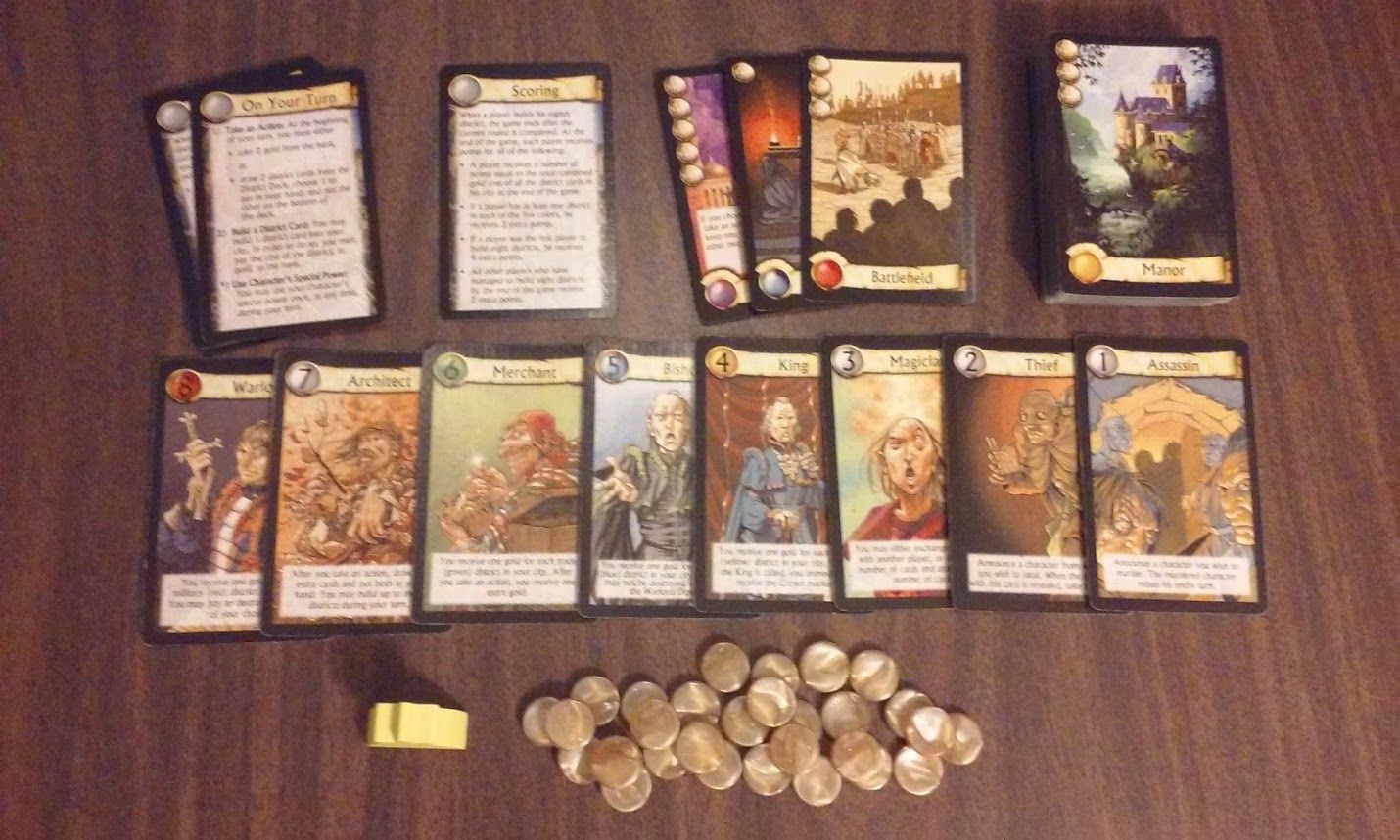
I have nothing to complain about here; the artwork is good, the cards are of good quality, and I especially like the plastic coin tokens. I got a glance at the new 2016 edition though, and wow does that look fantastic. It makes my version look horrible in comparison. I’m jealous.
They also included helpful reference cards for all players that give a great overview of what to do on your turn as well as how scoring works. It’s a great addition and I think all games should have something like that.
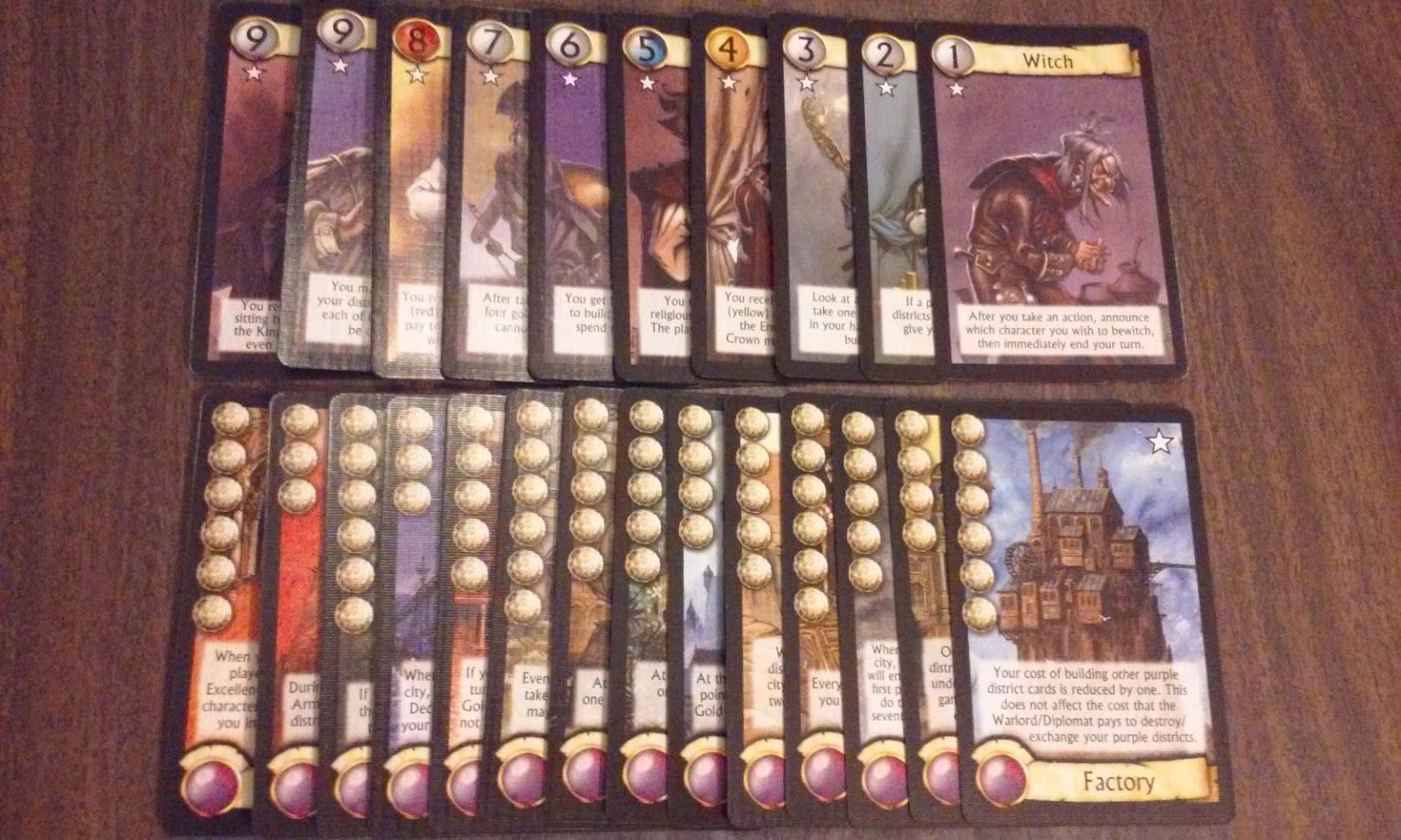
My version of the game came with Citadels: The Dark City expansion, so I may as well review that as well. I believe the 2016 edition includes these cards as well.
The expansion comes with 10 new character cards (including two rank 9 cards so that you can play with 8 players) and 14 new purple district cards. The new character cards can replace the original characters of the same number to make for a slightly different experience. The district cards can also replace some of the original purple district cards to add some variety.
Overall, the expansion definitely adds to the replayability of the game, and I like that it introduces so many new dynamics.
Citadels has exactly one great mechanic, and that’s deciding which character to choose each round. Trying to figure out what characters other people have so that you can dodge the assassin or assassinate someone yourself offers some solid tension, and all the problem solving, bluffing, and gambling that goes along with that can really make this game shine at times.
Unfortunately, everything else in the game is dry. The theme is generic, building the districts isn’t all that engaging, and the game just doesn’t offer enough to justify its length. Understand that most of the game is waiting, and the only time other player’s turns are interesting is if you’re being assassinated, stolen from, or a building is being destroyed.
I’ll still play it occasionally because the role selection is implemented so well, but at the end of the day it just doesn’t keep me engaged. Nowadays there are much better options out there.





Thanks for reading!